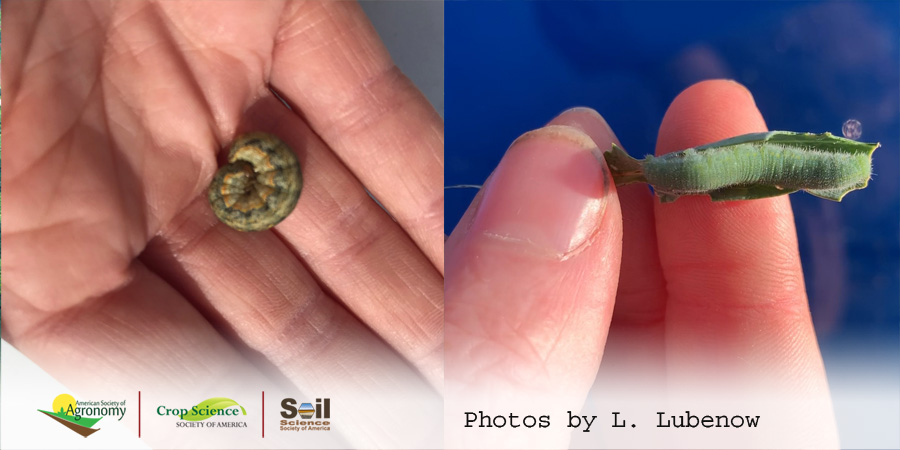July 7, 2020 – Have you ever looked for insects? Insects are ubiquitous in our environment. For farmers, many types of insects live in their fields. Some are beneficial like pollinators and predators. Others, though, can be called pests because they cause serious crop loss. The July 7th Sustainable, Secure Food Blog explores how farmers and agronomists use integrated pest management to control insects.
According to blogger Lesley Lubenow, “integrated pest management gives clear guidelines to when it is appropriate to spray pesticides. Each guideline details the growth period(s) during which crops are most susceptible to damage. This helps growers know when to keep a keen eye out for problems. The guidelines also help with identification of the pest. Finally, they help to determine what size pest population will damage yields. This helps farmers determine when to treat the pest problem.”
There are several techniques farmers and agronomists use to manage pests with integrated pest management techniques:
- Measuring the level of crop damage. In the case of canola, if flea beetles cause 15% leaf damage, then farmers are advised to use a pesticide. Below that, they don’t need to treat.
- Some pests are only occasional visitors and their damage is less than the cost of the treatment. Blister beetles migrate to faba bean fields for only a few days, they move on. Depending on how much of the field is affected, no treatment may be needed.
- Some pests cause damage at only certain life cycles. As hungry catepillars grow into pupas, they can eat a lot of leaves. Cutworm is one such pest.
Integrated pest management guidelines also suggest non-chemical solutions to problems. Farmers can choose to plant earlier or later to miss the window when an insect appears. They can use a cover crop to hide plant scents from searching insects. For gardeners, non-chemical solutions include using a water hose to wash aphids off a plant, picking off Colorado potato bugs into a bottle, and other solutions.
To find out more about integrated pest management so you can determine whether to spray or not to spray, read the entire blog: https://sustainable-secure-food-blog.com/2020/07/07/how-do-farmers-and-agronomists-determine-which-pests-need-to-be-managed
This blog is sponsored and written by members of the American Society of Agronomy and Crop Science Society of America. Our members are researchers and trained, certified, professionals in the areas of growing our world’s food supply while protecting our environment. We work at universities, government research facilities, and private businesses across the United States and the world.
Original post https://alertarticles.info
